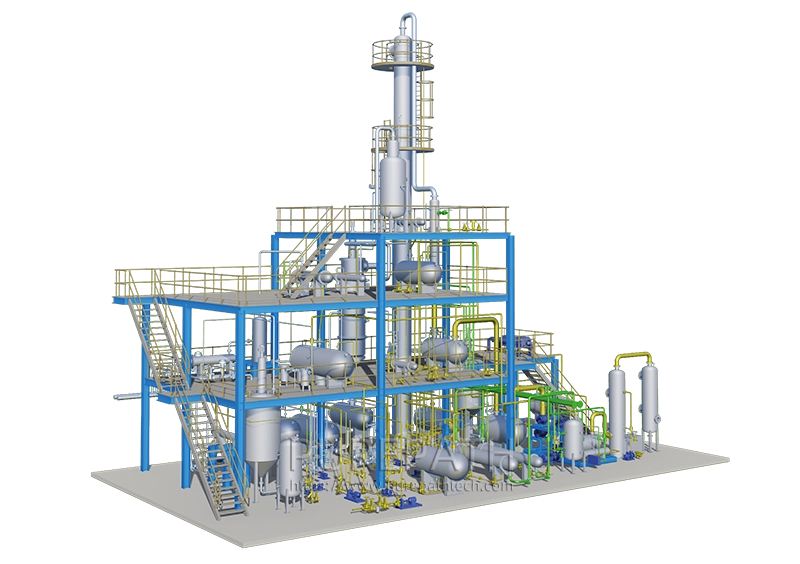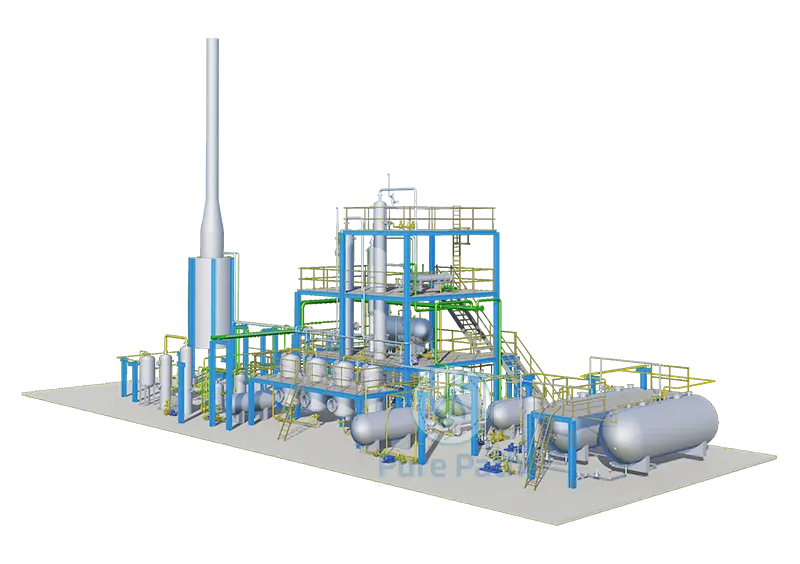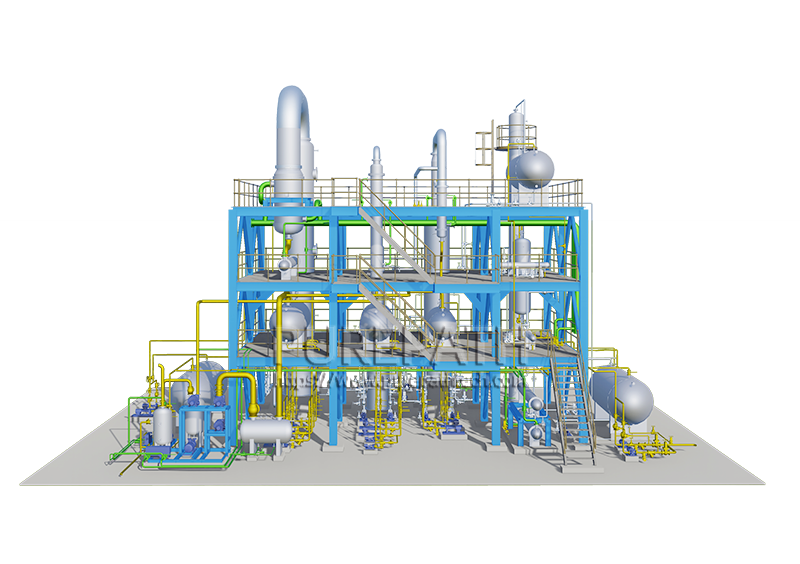The Role of Used Oil Re-refining in Reducing Carbon Emissions
Our dependence on oil comes at an environmental cost. Understanding the impact of traditional oil production and the potential of used oil re-refining is crucial in the fight against climate change. This article explores how re-refining used oil can significantly reduce carbon emissions.
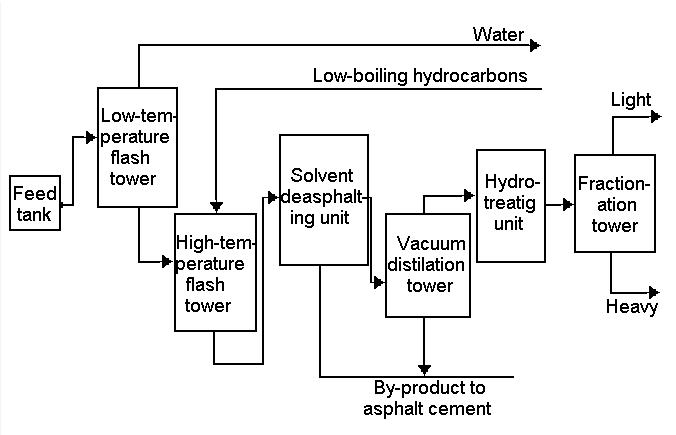
The Carbon Footprint of Traditional Oil Production
Traditional oil production methods entail extracting crude oil from the earth, a process notorious for its substantial carbon emissions. The exploration and drilling of oil wells, often in environmentally sensitive areas, result in habitat destruction and ecosystem disruption. Furthermore, the extraction process itself releases methane, a potent greenhouse gas, into the atmosphere.
Once extracted, crude oil undergoes transportation to refineries, typically via pipelines, tankers, or trucks. The transportation phase adds another layer of carbon emissions, as fossil fuel-powered vehicles are commonly used for this purpose. Moreover, leaks and spills during transportation can lead to catastrophic environmental damage, as evidenced by incidents such as the Exxon Valdez oil spill.
Upon reaching the refinery, crude oil is subjected to intense heat and chemical processes to extract usable petroleum products like gasoline, diesel, and jet fuel. These refining processes are energy-intensive and rely heavily on fossil fuels, further exacerbating carbon emissions. Additionally, by-products such as petcoke, a high-carbon residue, are generated during refining and contribute to air pollution and climate change.
Once petroleum products are consumed, the used oil is often discarded, either improperly disposed of or burned for energy recovery. Improper disposal methods, such as dumping used oil into water bodies or onto land, contaminate soil and water sources, posing serious environmental and health risks.
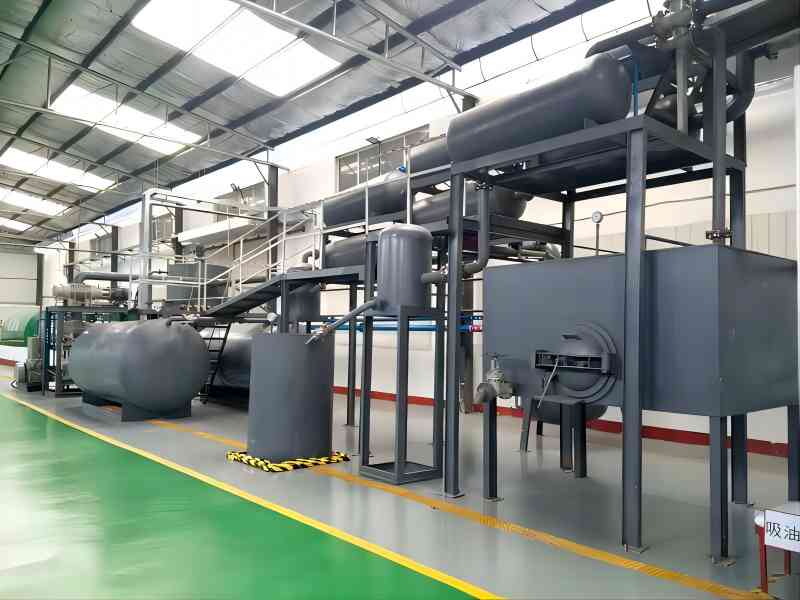
The Benefits of Used Oil Re-refining
The environmental benefits of used oil re-refining are substantial, particularly in reducing carbon emissions. Here’s a closer look at the reasons behind this dramatic impact:
- Reduced Energy Consumption: Traditional oil refining requires significant energy for drilling, transportation, and the complex refining process itself. Each of these stages burns fossil fuels, releasing CO2. Used oil re-refining, on the other hand, bypasses the need for crude oil extraction and significantly reduces the overall energy required. The cleaning and purification process of used oil uses less energy compared to the entire process of extracting and refining virgin oil.
- Recycling Existing Resources: Re-refining essentially recycles a valuable resource – used oil. Instead of treating it as waste, it’s transformed back into a usable product. This reduces the demand for virgin crude oil, a finite resource whose extraction comes with a high carbon footprint. By utilizing what we already have, we significantly reduce the need for further drilling and refining of virgin oil.
- Avoided Emissions: Improper disposal of used oil is a significant environmental concern. Used oil contains harmful pollutants that can contaminate soil and waterways if not disposed of responsibly. Re-refining prevents these pollutants from entering the environment and the associated emissions that come with improper disposal methods like burning.
Life cycle assessments (LCA) provide a scientific framework for measuring the environmental impact of a product or process throughout its lifecycle. These studies have consistently shown that re-refined base oil has a significantly lower carbon footprint compared to virgin base oil. Estimates suggest a reduction of:
- 70% to 80% in GHG emissions: This translates to a dramatic decrease in the amount of CO2 released into the atmosphere per liter of base oil produced.
- Reduction in Other Pollutants: Re-refining also reduces emissions of other pollutants associated with traditional oil refining, such as sulfur oxides and nitrogen oxides.
Used oil re-refining offers a clear advantage in terms of carbon footprint reduction. By consuming less energy, utilizing existing resources, and preventing harmful emissions, re-refining plays a crucial role in mitigating climate change.
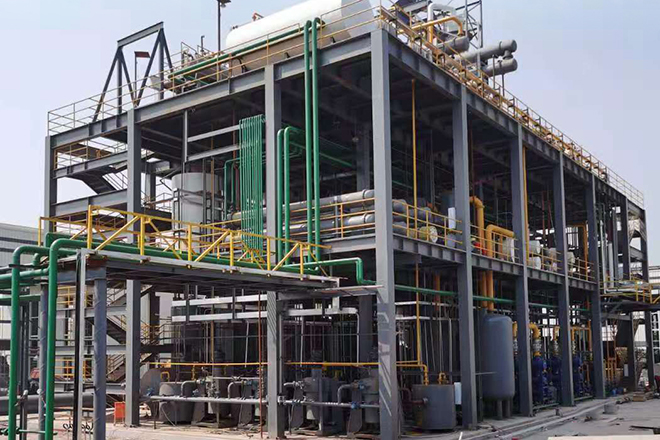
Challenges and Considerations
While used oil re-refining boasts significant environmental benefits, there are hurdles to overcome for wider adoption. Let’s delve deeper into these challenges and considerations:
Complexity of the Re-refining Process
- Contamination: Unlike virgin crude oil, used oil is a mixed stream. It can contain contaminants like antifreeze, coolant, water, and metals from engine wear. The re-refining process needs to be sophisticated enough to remove these contaminants effectively without compromising the quality of the re-refined oil.
- Variability in Used Oil: Used oil comes from various sources, including cars, trucks, industrial machinery, and hydraulic systems. Each source might have unique contaminants and require adjustments in the re-refining process for optimal results.
- Economies of Scale: Setting up a re-refinery requires significant upfront investment in specialized equipment and technology. Smaller operations might struggle to achieve economies of scale, making it less cost-competitive compared to large-scale virgin oil refineries.
Collection and Transportation
- Collection Infrastructure: Unlike readily available crude oil deposits, used oil is dispersed geographically. Building a robust collection network with collection centers conveniently located for consumers and businesses is crucial.
- Transportation Costs: Collecting used oil often involves transporting smaller volumes from various locations. This can be more expensive compared to transporting large quantities of crude oil from a single source. Additionally, proper regulations are needed to ensure safe and responsible transportation of used oil.
Market and Consumer Awareness
- Public Perception: There might be a misconception among consumers that re-refined oil is inferior to virgin oil. Educational campaigns are needed to highlight the performance equivalence and environmental benefits of re-refined oil.
- Demand and Pricing: Building a stable demand for re-refined oil products is crucial for the economic viability of re-refineries. Competitive pricing strategies and promoting the environmental benefits to consumers can help increase demand.
- Standardization and Regulations: Ensuring consistent quality standards for re-refined oil is essential. Clear regulations and certifications can build consumer trust and encourage wider adoption.
By addressing these challenges, the re-refining industry can unlock its full potential as a sustainable alternative to virgin oil production. Collaboration between governments, industry players, and consumers is key to creating a robust and environmentally responsible used oil re-refining system.
Conclusion
Used oil re-refining presents a significant opportunity to reduce our reliance on virgin oil production and minimize our carbon footprint. By supporting the development of re-refining infrastructure, investing in efficient collection systems, and promoting public awareness, we can unlock the full potential of this environmentally friendly solution. As we move towards a more sustainable future, used oil re-refining offers a powerful tool in the fight against climate change. It’s a win-win for the environment and our dependence on fossil fuels.


